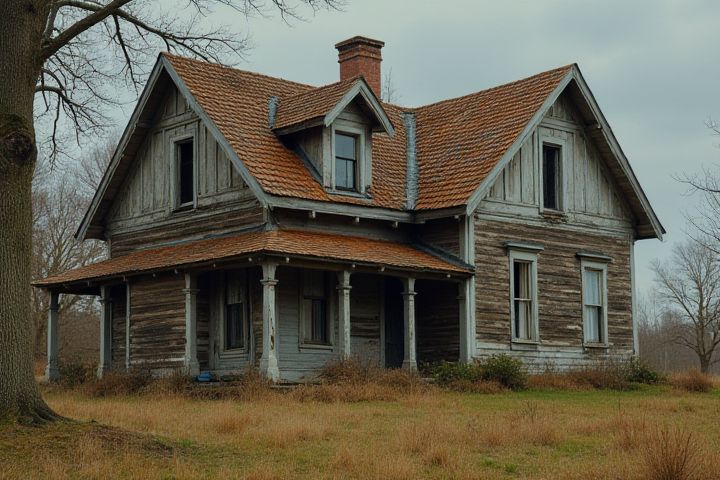
Insuring an old house is definitely possible, but several factors must be considered. Insurers frequently assess the home's age, construction materials, and overall condition, which can influence policy terms and premiums. You may find that older houses require specialized coverage due to outdated wiring, plumbing, or structural concerns. It's essential to provide a thorough home inspection report, as this can lead to better coverage options and lower rates. Engaging with specialized insurers or providers who understand vintage homes may help you secure the most appropriate policy.
Can We Insure An Old House
Higher Premiums
Insuring an old house typically results in higher premiums due to several risk factors. Factors such as outdated wiring, plumbing, and the potential for mold can significantly affect the property's safety and insurability. On average, homeowners of older properties may face premiums that are 20-30% higher compared to newer homes. For you, it's essential to assess the house's condition and any renovations needed to possibly lower insurance costs while ensuring proper coverage.
Inspection Requirements
Insuring an old house often requires a detailed inspection to assess its condition and identify any potential risks. Typically, insurers may mandate a comprehensive evaluation by a licensed inspector to check the integrity of the roof, plumbing, electrical systems, and foundation, especially if the home is over 30 years old. You might also need to provide documentation of any renovations and upgrades made, as these can significantly influence your policy rates. Many insurance companies have specific guidelines that vary based on the age and historical significance of the property, ensuring all safety standards are met before coverage is granted.
Coverage Limits
Insuring an old house typically involves assessing specific coverage limits tailored to its unique characteristics. Many insurance providers offer dwelling coverage that reflects the home's replacement cost, which could be significantly higher than its current market value due to potential renovation or repair needs. It's crucial to ensure that your policy includes additional endorsements for features like vintage fixtures or historical elements, as these may require higher coverage limits. Be aware that older homes may also face limitations in liability coverage, making it essential to thoroughly review policy terms to safeguard your investment adequately.
Renovation Impact
Insuring an old house often depends on the extent of any renovations made, as these improvements significantly enhance its market value and structural integrity. Major updates such as electrical rewiring or plumbing replacements can reduce risks associated with fire or water damage, positively influencing insurance premiums. If you plan to renovate, documenting the upgrades with proper permits and inspections can make your home more insurable and may qualify you for discounts. Before purchasing a policy, it's crucial to consult with your insurance agent about how specific renovations impact the coverage and costs associated with your historic property.
Historic Designation
Insuring an old house with a historic designation can be complex but rewarding. Insurance companies often recognize the unique value of historic properties, which may lead to specialized coverage options tailored for restoration and preservation. When insuring your historic home, it's crucial to provide documentation of its designation and any renovations done in accordance with preservation guidelines. This information can help in securing adequate financial protection while maintaining the integrity and character of your property.
Specialized Policies
When insuring an old house, specialized policies tailored for vintage or historic properties are crucial. These policies often include coverage for unique architectural features and materials that standard homeowners insurance may overlook. Typically, they also offer higher protection limits to account for the increased costs of restoration and repair. For your old house, consider consulting with an insurance agent who understands the specific risks associated with aging structures and can help you find the right coverage.
Replacement Cost vs. Actual Cash Value
When insuring an old house, understanding Replacement Cost (RC) and Actual Cash Value (ACV) is crucial. Replacement Cost provides coverage for the expenses required to rebuild the home using similar materials and craftsmanship, regardless of depreciation, ensuring that your investment is fully protected. In contrast, Actual Cash Value factors in depreciation, meaning you would receive a payout equivalent to the current market value of your home, which is often significantly lower. Many homeowners opt for RC to safeguard against potential losses, as it offers more comprehensive protection for older properties that might require extensive repairs or restorations.
Claims History Impact
Insuring an old house often depends significantly on its claims history, as insurers assess prior claims to gauge risk. A property with frequent claims may lead to higher premiums or even difficulty in securing coverage, impacting your financial obligations. For instance, homes with a history of water damage or fire-related claims may attract stricter underwriting guidelines. Understanding this impact is essential, as a clear claims history can enhance your chances of obtaining more favorable insurance terms for your historic property.
Upgraded Systems Incentives
Insuring an old house becomes more attainable by upgrading various systems to meet modern standards, which can lead to significant savings through insurance incentives. For instance, replacing outdated electrical systems with codes-compliant wiring can lower your risk profile, potentially reducing premiums by up to 20%. Similarly, updating plumbing with modern pipes can minimize water damage risk, further enhancing your insurance options. By making these improvements, you not only increase the safety and value of your home but also attract better coverage and lower rates from insurers.
Risk Factors
Insuring an old house often involves assessing various risk factors that can impact coverage and premiums. For instance, homes built before 1970 may have outdated electrical systems or plumbing, increasing the risk of fire or water damage. Moreover, the materials used, such as lead paint or asbestos, pose health hazards, potentially affecting insurability. To ensure adequate protection, you should consider updating key infrastructure or obtaining specialized policies that address the unique challenges associated with older properties.
